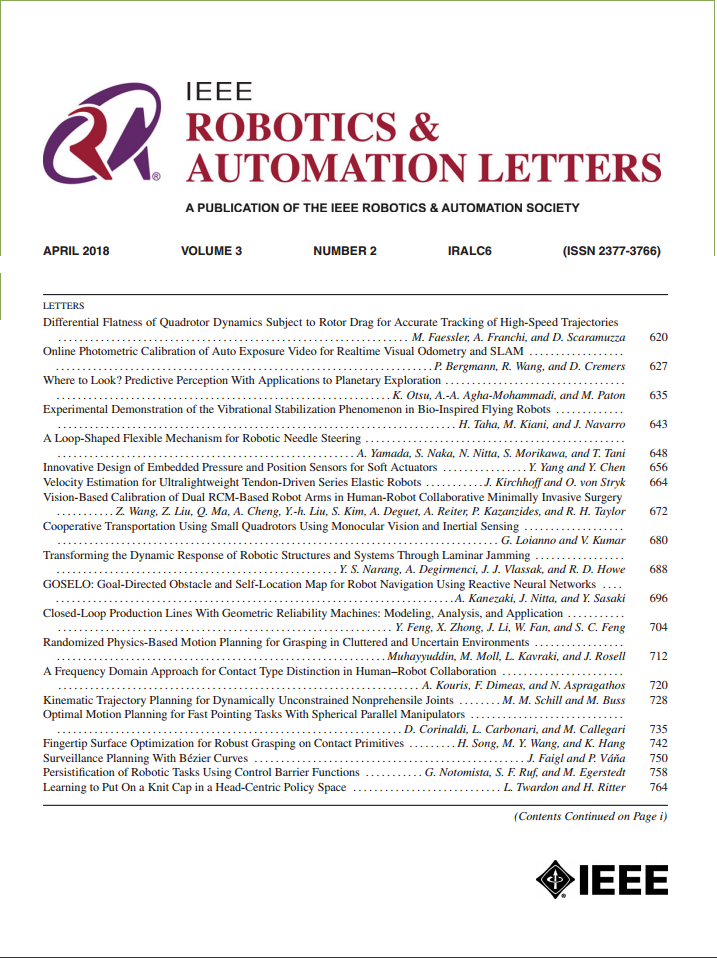FLoRA: A Framework for Learning Scoring Rules in Autonomous Driving Planning Systems
IF 4.6
2区 计算机科学
Q2 ROBOTICS
引用次数: 0
Abstract
In autonomous driving systems, motion planning is commonly implemented as a two-stage process: first, a trajectory proposer generates multiple candidate trajectories, then a scoring mechanism selects the most suitable trajectory for execution. For this critical selection stage, rule-based scoring mechanisms are particularly appealing as they can explicitly encode driving preferences, safety constraints, and traffic regulations in a formalized, human-understandable format. However, manually crafting these scoring rules presents significant challenges: the rules often contain complex interdependencies, require careful parameter tuning, and may not fully capture the nuances present in real-world driving data. This work introduces FLoRA, a novel framework that bridges this gap by learning interpretable scoring rules represented in temporal logic. Our method features a learnable logic structure that captures nuanced relationships across diverse driving scenarios, optimizing both rules and parameters directly from real-world driving demonstrations collected in NuPlan. Our approach effectively learns to evaluate driving behavior even though the training data only contains positive examples (successful driving demonstrations). Evaluations in closed-loop planning simulations demonstrate that our learned scoring rules outperform existing techniques, including expert designed rules and neural network scoring models, while maintaining interpretability. This work introduces a data-driven approach to enhance the scoring mechanism in autonomous driving systems, designed as a plug-in module to seamlessly integrate with various trajectory proposers. Our video and code are available on在自动驾驶系统中,运动规划通常分为两个阶段:首先,轨迹建议者生成多个候选轨迹,然后由评分机制选择最适合执行的轨迹。在这一关键的选择阶段,基于规则的评分机制尤为吸引人,因为它们可以将驾驶偏好、安全限制和交通法规明确编码为正式的、人类可理解的格式。然而,人工制定这些评分规则面临着巨大的挑战:规则通常包含复杂的相互依存关系,需要仔细调整参数,而且可能无法完全捕捉真实世界驾驶数据中存在的细微差别。这项工作介绍了 FLoRA,这是一个新颖的框架,它通过学习用时态逻辑表示的可解释评分规则来弥补这一差距。我们的方法采用可学习的逻辑结构,能捕捉不同驾驶场景中的细微关系,直接从 NuPlan 收集的真实世界驾驶演示中优化规则和参数。即使训练数据只包含正面示例(成功的驾驶演示),我们的方法也能有效地学习评估驾驶行为。闭环规划模拟评估表明,我们学习的评分规则优于现有技术,包括专家设计的规则和神经网络评分模型,同时保持了可解释性。这项工作引入了一种数据驱动的方法来增强自动驾驶系统中的评分机制,它被设计成一个插件模块,可与各种轨迹提议器无缝集成。我们的视频和代码见 xiong.zikang.me/FLoRA/。
本文章由计算机程序翻译,如有差异,请以英文原文为准。
求助全文
约1分钟内获得全文
求助全文
来源期刊

IEEE Robotics and Automation Letters
Computer Science-Computer Science Applications
CiteScore
9.60
自引率
15.40%
发文量
1428
期刊介绍:
The scope of this journal is to publish peer-reviewed articles that provide a timely and concise account of innovative research ideas and application results, reporting significant theoretical findings and application case studies in areas of robotics and automation.
 求助内容:
求助内容: 应助结果提醒方式:
应助结果提醒方式:


